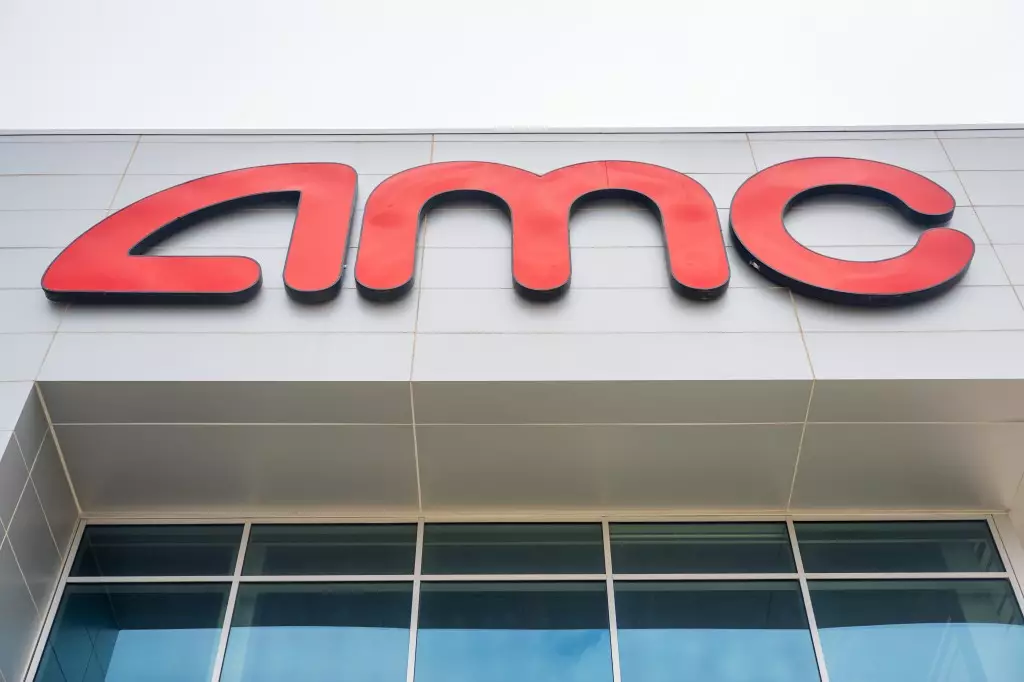In the world of cinema, each quarter can tell a dramatically different story, yet the recent results from AMC Entertainment have sparked a contentious dialogue about the future of moviegoing. Reports of revenue slumps and expansive net losses might lead some to predict a doom-laden narrative for theaters. However, AMC CEO Adam Aron fires back with an assertion that challenges these initial interpretations: the unusually soft first quarter of 2025 does not paint the entire picture. One must wonder; could he be right?
The skepticism surrounding the cinema landscape is palpable as people grapple with changed norms in entertainment consumption. Streaming platforms have led many to believe that the theater experience is becoming obsolete, a quaint relic of prior decades. Yet Aron’s assertion that current figures depict a “distorting anomaly” suggests that those critically engaging with the industry might need to rethink their calculations. The dynamics of consumer demand can shift dramatically, and we must not hasten to draw conclusions from limited data that may not withstand scrutiny in a future context.
Understanding AMC’s Financial Terrain
Diving deeper into AMC’s financial landscape reveals a complex story. The company reported a staggering $202 million loss, markedly worse than the $163 million loss from the same quarter last year. This raises critical questions about the underlying sustainability of their operational model. However, it also prompts an analysis of the broader context. With revenues exceeding Wall Street expectations at $862 million despite a drop from $951 million, it’s evident that AMC retains a competitive edge in a tumultuous market. Their earnings per share, while still negative, show an improvement with a larger share base.
While relinquishing notions of a permanent downturn may take some adjustment, it’s essential to recognize that periods of volatility can also present opportunities for recovery. The claims of a booming demand post-April provide an intriguing counter-narrative, suggesting that the film industry might snap back stronger than anticipated. Perhaps, Aron’s assertion that first quarter results are misleading could extend beyond mere rhetoric.
Consumer Enthusiasm: A Bright Outlook
There’s a notable contrast in the reporting of industry performance across different quarters. April brought an unprecedented resurgence in ticket sales, doubling that of the previous year — a stark reminder that consumer enthusiasm for cinema remains alive. The release of major films like “Thunderbolts” and popular franchises ignited a renewed demand, hinting at the possibility that the lull represented more of a temporary disruption than a systemic decline.
Indeed, upcoming releases such as Disney’s “Lilo & Stitch” and Apple’s “F1” highlight the wealth of content available to reignite audiences’ passion for the big screen. This infusion of major titles can drive ticket sales astronomically, showcasing that cinema can still compete in the entertainment sphere.
Navigating Investor Sentiment
AMC’s stock, once perceived as a meme phenomenon, continues to tread a murky path in aftermarket trading, presently hovering around $2.70. This stagnation raises pivotal conversations about investor sentiment. Are they too wary of the outside noise and obsessively focused on quarterly reports? While the long-term view suggests potential resurgence fueled by blockbuster releases, immediate concerns can overshadow optimism. It’s crucial that investors engage with the broader narrative, recognizing both the short-term fluctuations and the eventual recovery potential in cinema.
Despite the cash flow challenges faced, with a soaring $370 million burn in operating cash compared to the $188 million in Q1 2024, AMC retains a cash position of $379 million. This indicates they possess sufficient reserves to navigate a challenging landscape, underscoring the importance of strategic decision-making in operational expenditures.
The Future of the Moviegoing Experience
Ultimately, the discourse surrounding AMC and movie theaters extends beyond financial reports; it raises questions about the cultural impact of cinema in the digital era. While analysts aggregate financial figures to provide forecasts, it is also imperative to consider the human experience tied to moviegoing. The theater remains a unique social space, facilitating shared experiences that streaming services cannot replicate fully. As film enthusiasts continue to champion cinematic experiences, we must appreciate that fluctuations in revenue are but a chapter in a larger narrative.
In times marked by significant change, the opportunity exists for AMC and its peers to redefine how they engage with audiences, ensuring the resilience of theaters within the broader entertainment ecosystem. The road ahead might be bumpy, but genuine devotion to film can propel the industry into a vibrant future, regardless of quarterly fluctuations.

